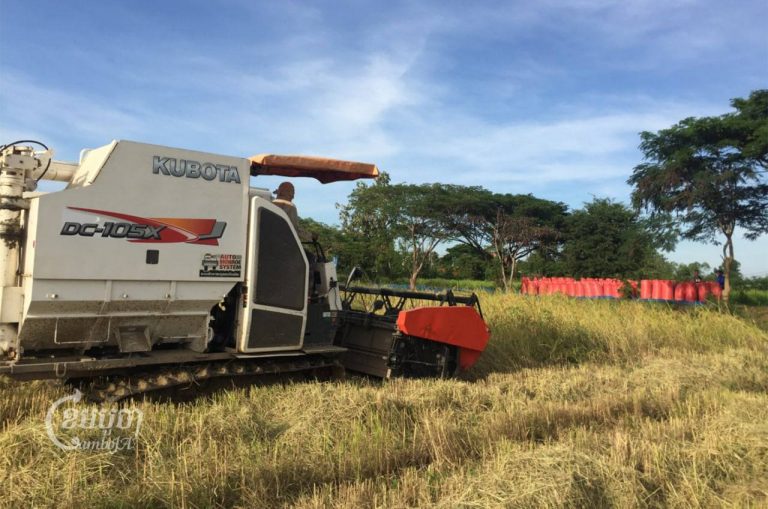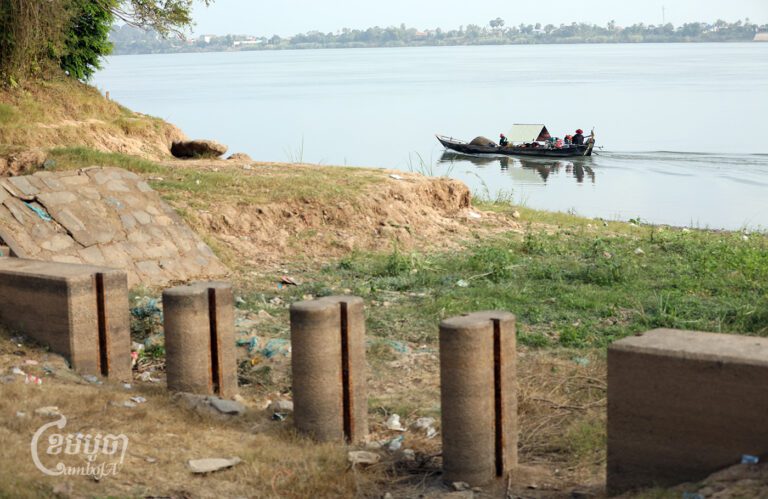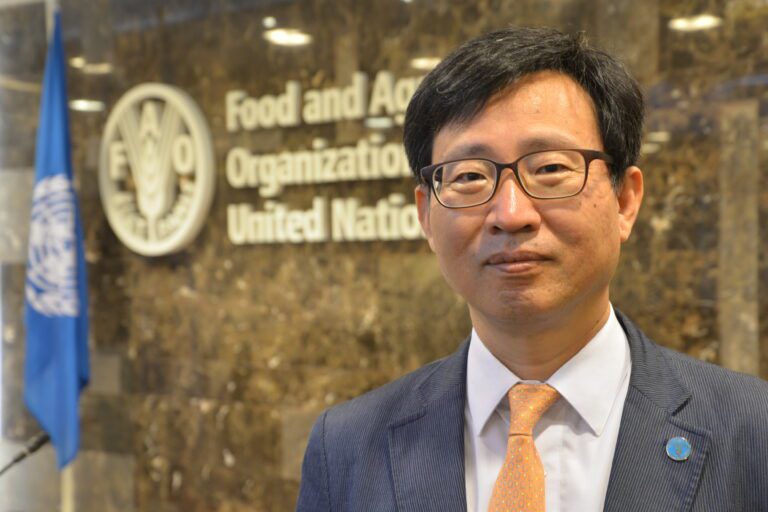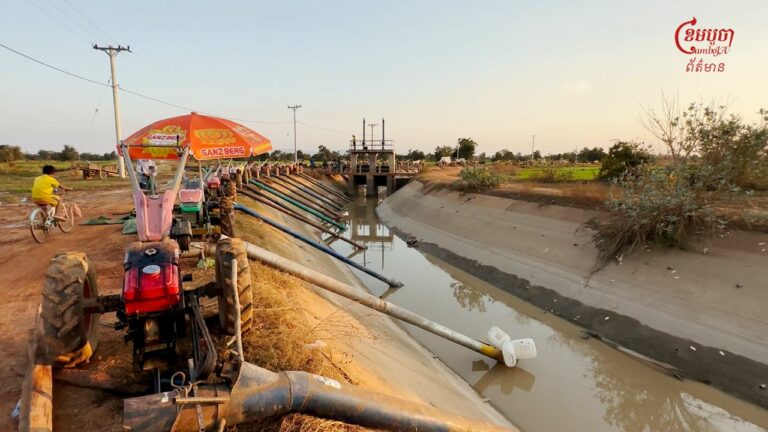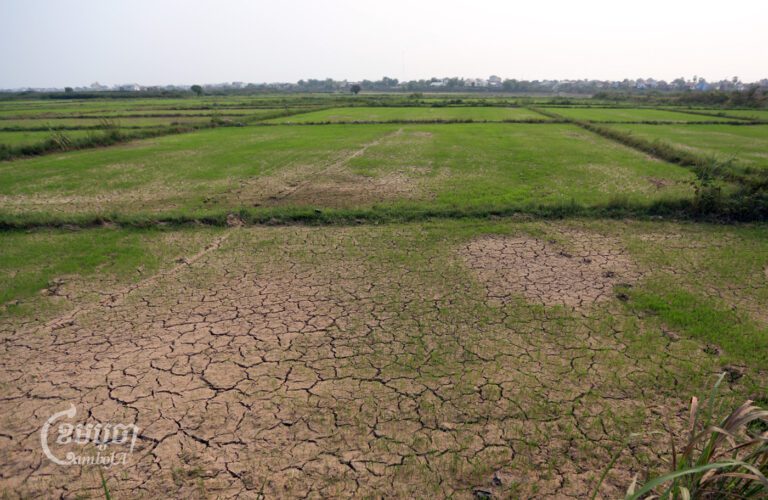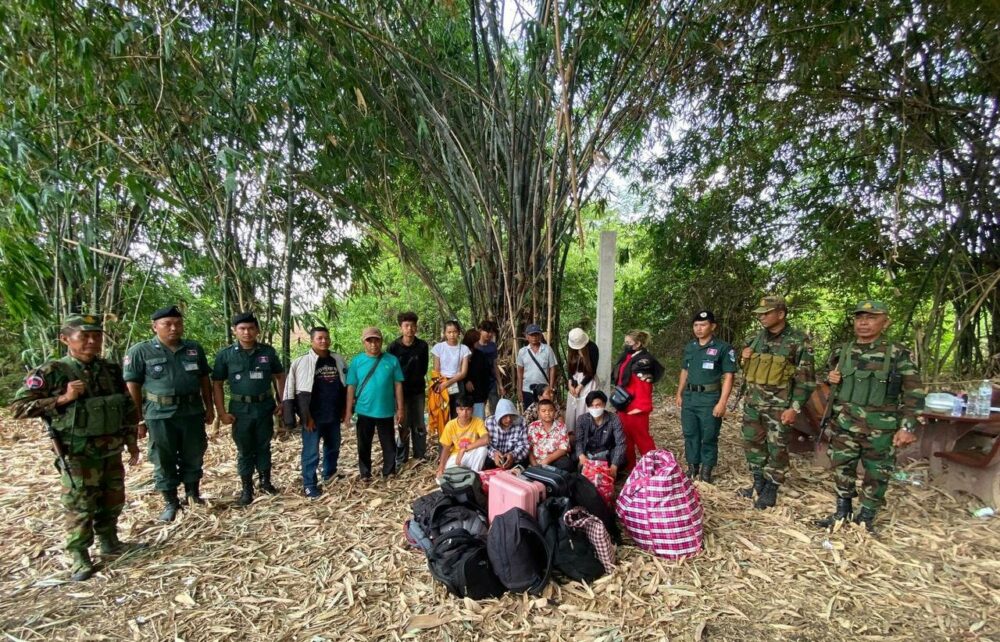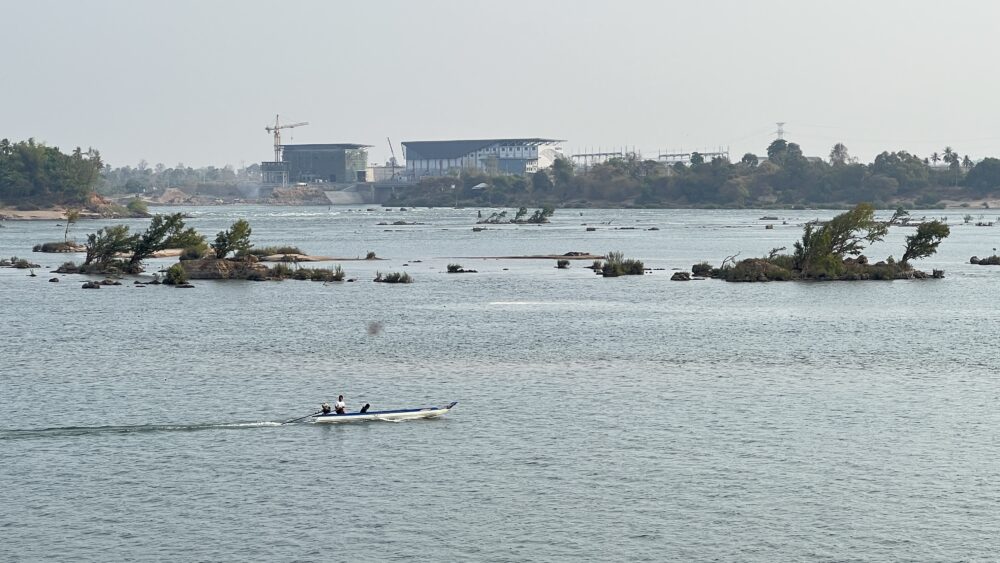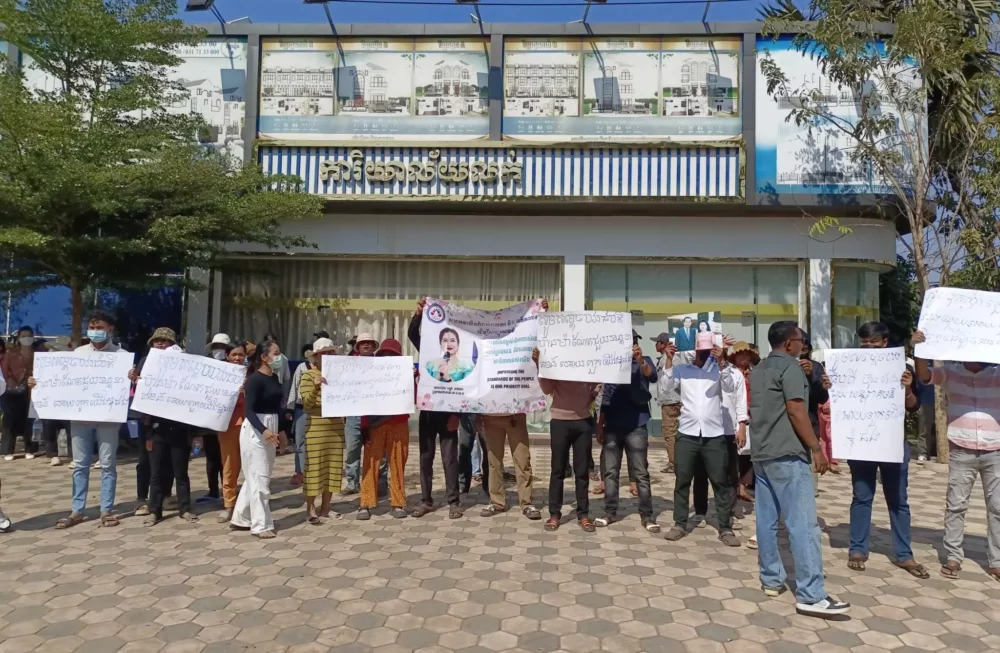Ruon Thol plans to harvest his rice crop early next month. The farmer spent more than 6 million riel (about $1,500) this wet season to cultivate his four hectares of farmland in Battambang province’s Banan district.
But Thol, 51, is already predicting a loss since half of his rice crop was damaged by flooding last month.
“I expect I can receive about two tons of rice yield per hectare this year,” he said. “If I only receive two tons or less, I will lose.”
Three tons per hectare would allow him to turn a profit of about $1,000, Thol said.
In addition, he said the price of a 50-kilogram bag of fertilizer has more than doubled, from about $18.50 last year to $50 this year.
Global fertilizer prices have risen due to the war in Ukraine and sanctions against Russia, which produces about a quarter of the world’s nitrogen fertilizer.
“This year the price of fertilizer is too expensive,” said Thol, who spent 4.2 million riel ($1,050) on fertilizer, his main expense.
Like many farmers in Cambodia’s “rice bowl” provinces of Battambang and Banteay Meanchey, Thol is also worried about low rice prices this harvest season.
While rice millers set a price of 1,040 riel ($0.25) per kilogram for grade 1 rice, Thol expects to earn about 700 riel per kilogram, since he produces lower-quality grade 2 rice.
The average price of paddy rice in November 2020 was above 900 riel per kilogram, according to Cambodia Rice Federation figures.
Some rice farmers this month have voiced complaints over low prices while the government attempts to quell public criticisms, this week announcing millions of dollars in funding in an effort to stabilize prices.
The government’s Agricultural and Rural Development Bank on Monday announced an additional $10 million in funding for low-interest loans to rice millers so they may purchase rice paddy from farmers during the harvest season, adding to an existing $83 million in loan funding.
The increased budget was intended to stop the rice price from falling, ARDB said in a statement. The low rice price was due to farmers harvesting simultaneously and millers not being able to buy up the supply, it said.
One expert said low rice prices were an old problem stemming from capital and storage constraints.
“The issue of declining prices during the harvest season has been happening for decades while thousands of farmers rush to sell out their crop immediately after harvesting,” said Chan Sophal, director of the Centre for Policy Studies think tank.
Sophal said millers’ insufficient capital to buy up rice stocks and too few storage facilities remained challenges for the industry, with Cambodian farmers relying on sales to traders from Vietnam while local traders were unable to buy up the harvest season glut of rice.
The government should help rice-farming communities invest in drying facilities and warehouses, and inject more funds into the sector, he said.
“Most farmers have to sell their rice immediately after harvesting,” according to Sophal. “The long-term solution is to increase the [number of] rice-drying facilities and warehouses, since the harvest is currently done by machines, making it impossible for the rice millers to collect rice for drying” before it spoils.
Farmers’ Struggles
In the first nine months of this year, Cambodia exported nearly 450,000 metric tons of milled rice, valued at nearly $287 million, up 10% compared to the same period last year, according to a September food prices report from the U.N.’s World Food Programme and the Agriculture Ministry.
More than 2.36 million metric tons of paddy rice, equal to some $564 million, were exported from January to September.
“Export prices have decreased as global rice prices are decreasing due to surplus production in rice-producing countries,” the report said.
Greater rice supply and lower prices are cause for concern for many Cambodian farmers, like Thol, who borrow money from banks or microlenders to pay for agricultural inputs, hoping crop outputs will allow them to profit and pay back loans.
“Rice farming has been supporting my children’s schooling and I cannot rely on a monthly salary. My salary is used for paying interest and other expenses,” Thol said, referring to his income from his government job as a deminer.
“When the harvest season comes, I can sell rice to pay off the principal,” he added.

Som Sopheap, another Battambang rice farmer, said this season he used less fertilizer on his crops since it was too expensive, while his rice was selling for just over 800 riel per kilogram.
He expected to earn about $3,700 from his harvest of 18 tons of rice.
“For me, this price is low compared to the price of fertilizer,” he said.
In recent weeks, netizens have complained about the low price of rice on social media, with photos and videos showing farmers in Battambang and Banteay Meanchey transporting their rice and waiting outside milling facilities to sell their crop.
The Agriculture Ministry earlier this month called on the public to stop posting “fake news,” including claims that the ministry has ignored low rice prices, as the posts would cause other farmers to rush to harvest and sell their crops due to fears of low prices, causing further price declines.
A civil servant in Banteay Meanchey province’s Svay Chek district was summoned last week by provincial authorities to sign an apology after he criticized the government online over low prices.
During his first press conference as agriculture minister last month, Dith Tina acknowledged the difficulty of addressing the agriculture sector’s long-standing challenges and warned potential ministry critics that he was willing to take legal action against them if he believed public criticism was defamatory.
According to a ministry statement issued last week, a rice miller in Battambang province, Oknha Phou Puy, agreed to buy grade 1 rice from farmers for 1,040 riel per kilogram. The ministry called on all rice millers to offer the same price to support farmers and help halt falling prices.
Industry Challenges, Possible Solutions
While rice prices have only seen slight changes in the last five years, increasing production costs, including for energy and fertilizer, have been pushed by global crises, such as the war in Ukraine, resulting in hardships for farmers, said Lun Yeng, Cambodia Rice Federation’s secretary general.
“Our production costs remain high in relation to the logistics system,” he said. “We are promoting more investment in warehouses and seeking to decrease the electricity price to lower the production cost.”
Production capacity was not an issue for the industry, since the government has increased investments in irrigation systems and tax exemptions for rice millers and exporters, Yeng said.
The country produced 10.9 million tons of paddy rice in 2020, up from 8 million tons in 2012, according to the Asian Development Bank.
Agriculture expert Yang Saing Koma said the government needed to budget at least $500 million a year for rice purchases from farmers in order to prevent prices from falling.
“While rice millers have limited capacity to collect rice during the harvest season, they do not take risks to buy more rice to stock because they are uncertain about Cambodia’s rice exports to the international market,” he said, adding that millers also needed sufficient capital.
To ensure long-term solutions for the sector, stakeholders needed to address the lack of funds for low-interest agricultural loans, high operating costs and the quality of rice seeds used by most farmers, Koma said.
“The government must have a mechanism to provide farmers with capacity building and connect farmers with rice millers,” he added.
The government should also set minimum rice prices while farmers should form agricultural collectives so they have the power to negotiate prices, Koma said.
In some provinces, farmers have organized into communities and made contracts with buyers in order to secure stable prices.
Pan Savoeun, a farmer from O’Trach farming community in Takeo province’s Tram Kak district, said his community signed a contract with producer and exporter Amru Rice.
“We are not worried about the price because farmers have an agreement with the company,” Savoeun said. “We can sell at 1,190 riel ($0.29) per kilogram.”
(Additional Reporting by Ou Leang Chhay)



